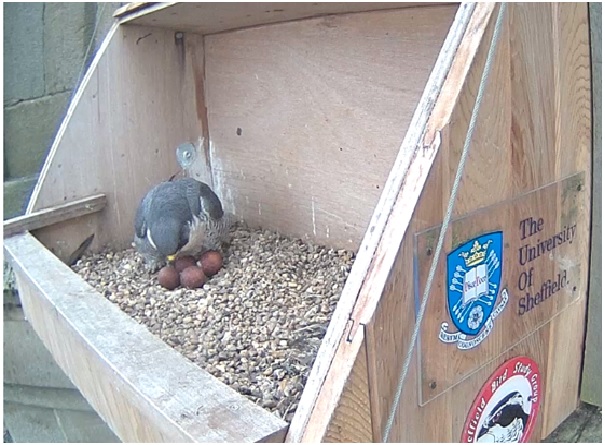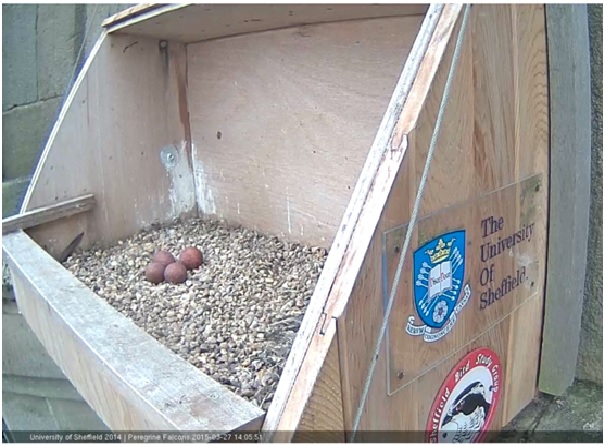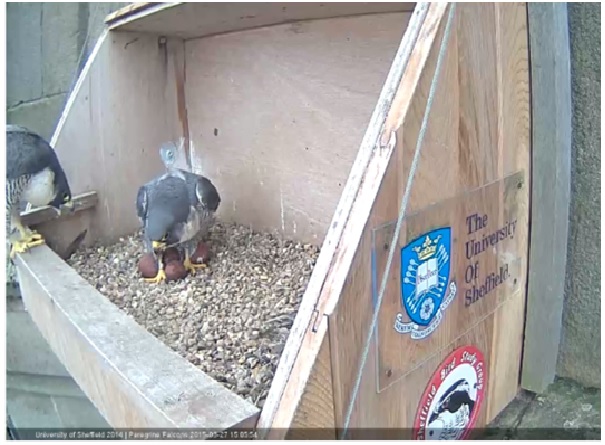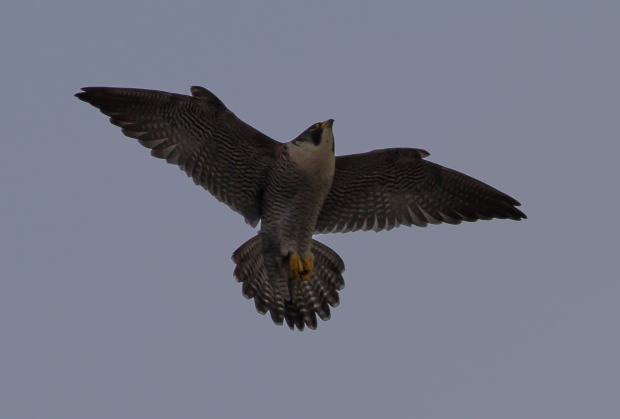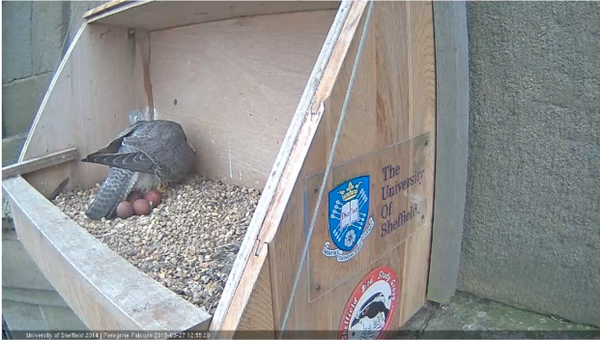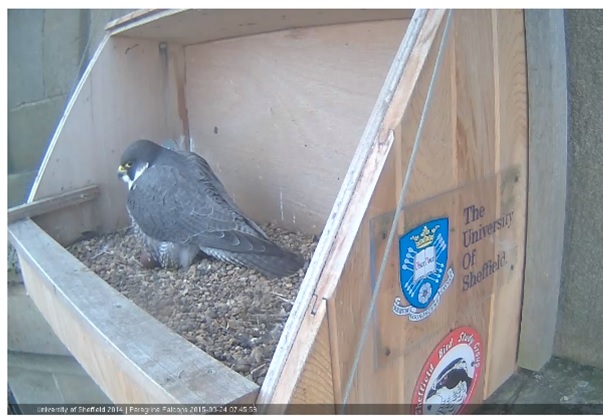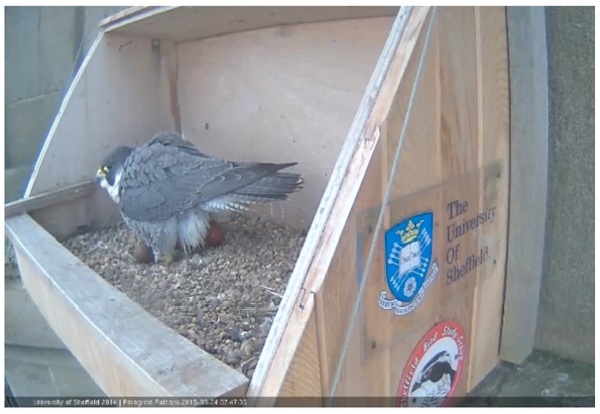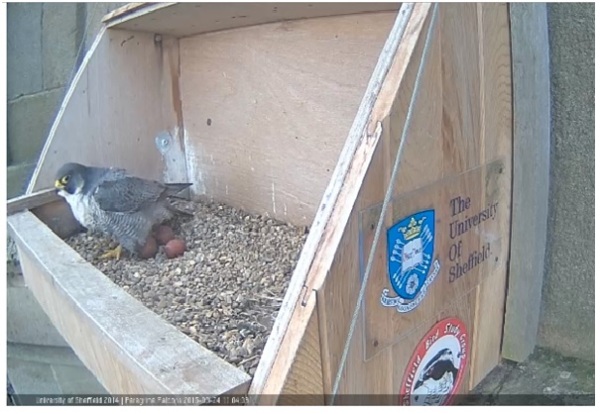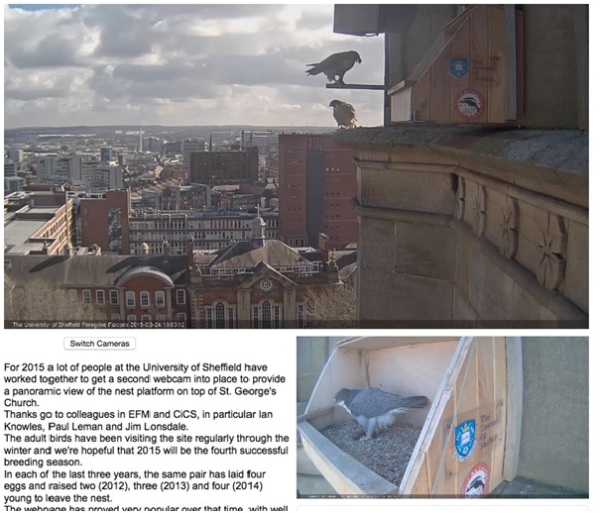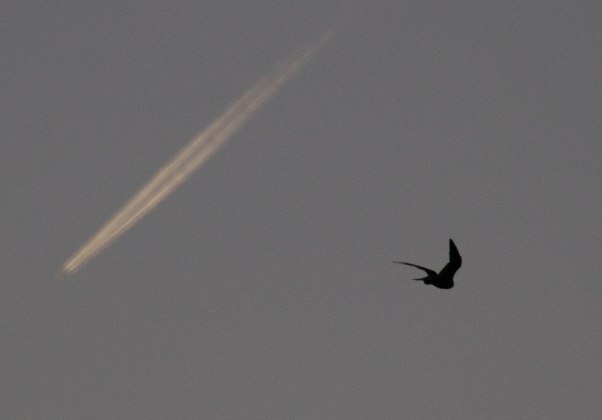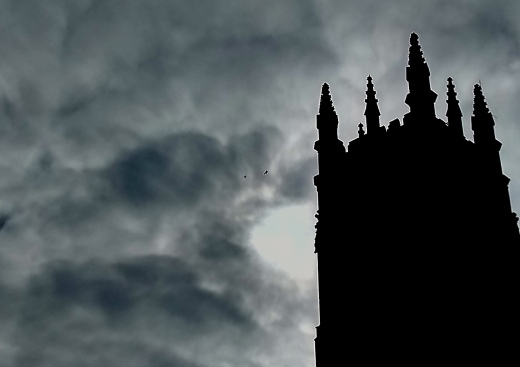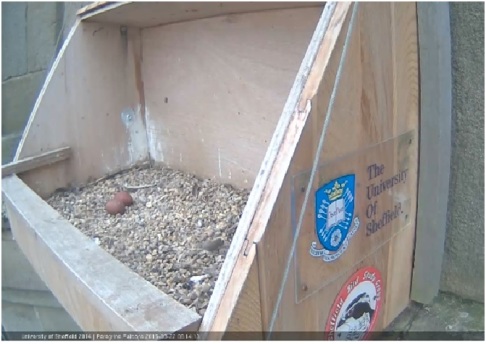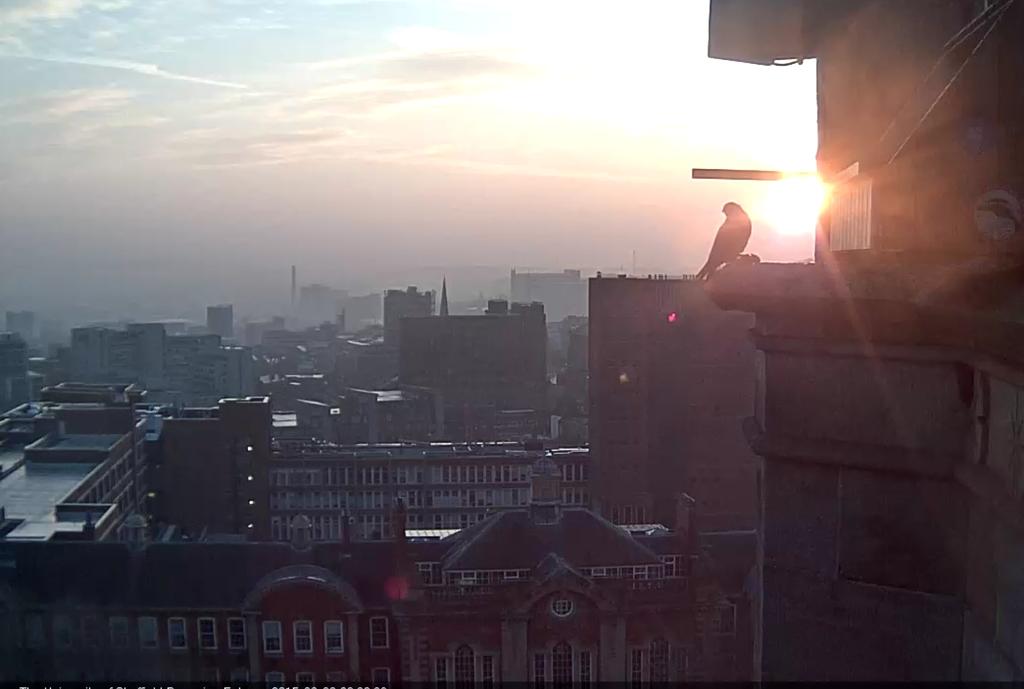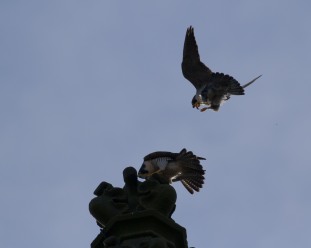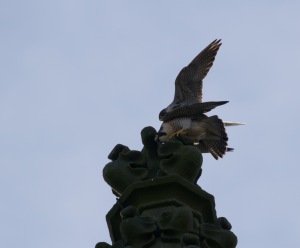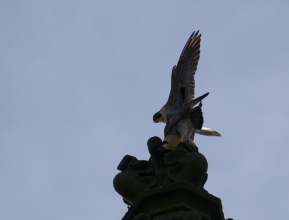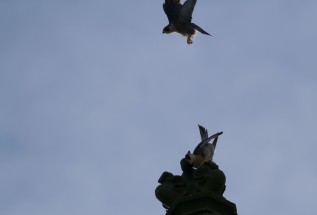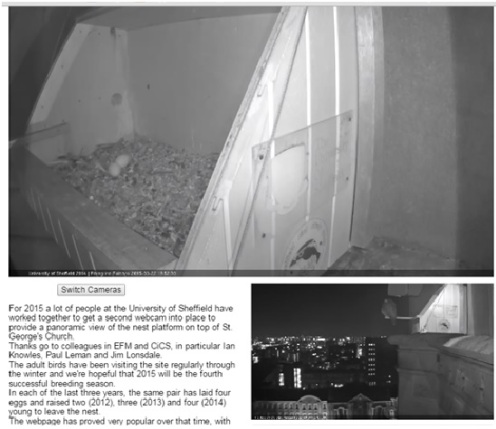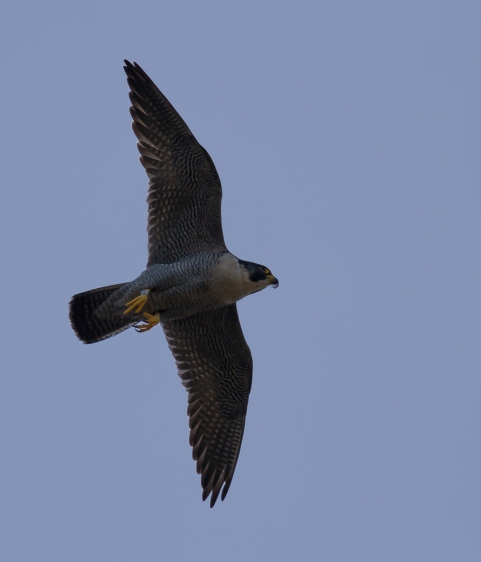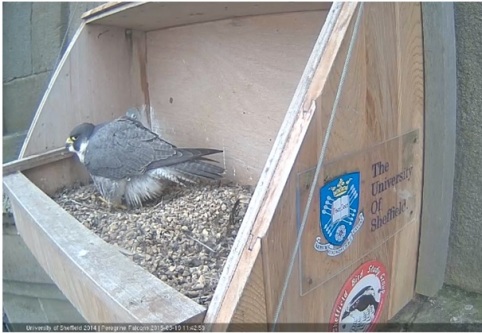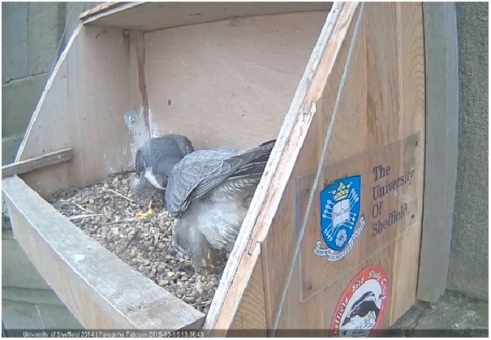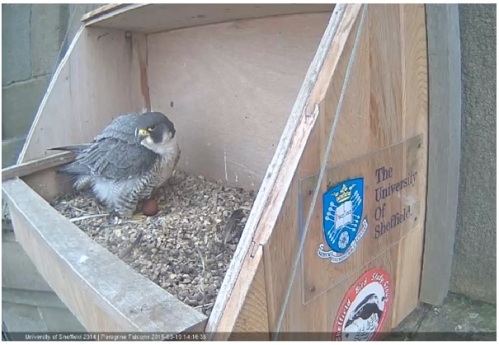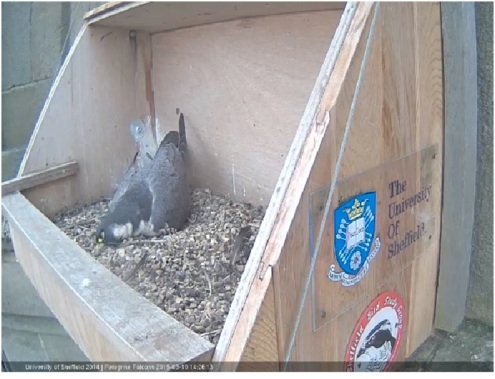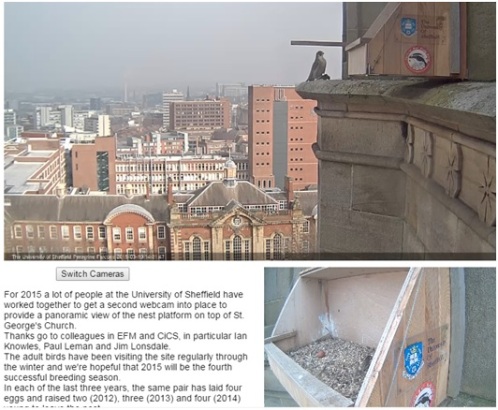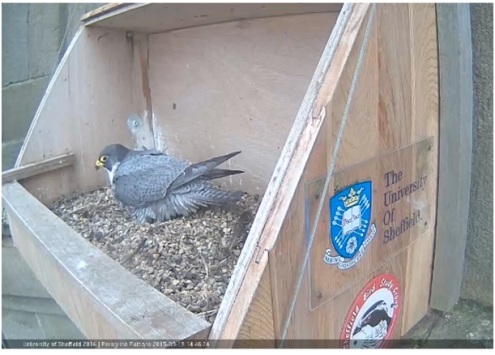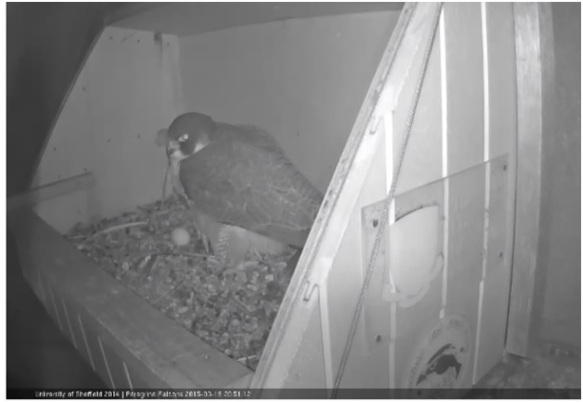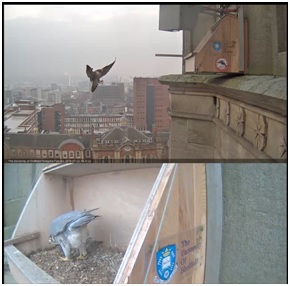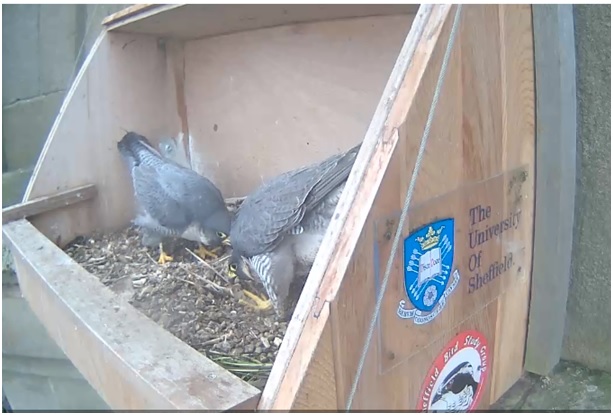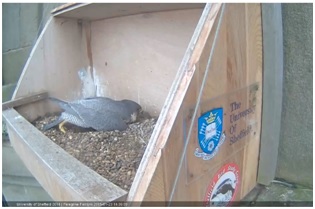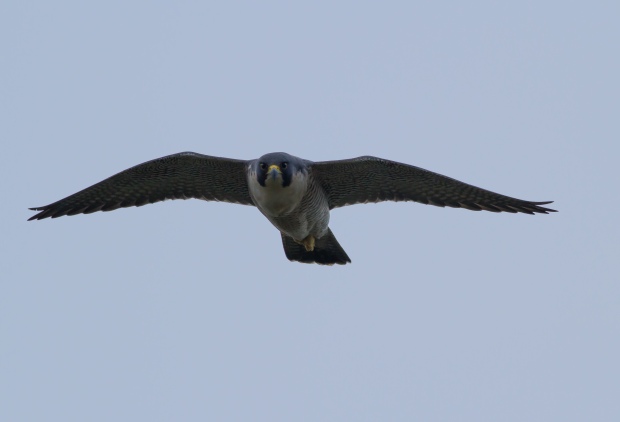Enough time has passed now since Friday’s fourth egg to be as sure as we can be that there will be no more additions to the clutch. I don’t know the exact time of laying, but by 06:00 on Friday morning the male was sitting tight on the nest and when he shifted at around 07:00 I caught a glimpse of four eggs. This was certainly the longest gap between eggs and was a maximum of 70 hours since the third was laid, and just over a week for the entire clutch to be laid, during which time the first and second eggs have been left uncovered for many hours at a time (including overnight).
It’s typical for a female to lay the same number of eggs from one year to the next, and for the eggs to have a similar colour and pattern, giving them a sort of ‘fingerprint’. Peregrine eggs vary from close to white background with reddish blotchy markings through to brownish, but the eggs of the St George’s female are a deep ruddy shade with few darker markings. They’ve been the same for the four years they’ve used the nest.
The eggs were briefly left unattended during a changeover at lunchtime, allowing confirmation; the new egg still looks a slightly paler, ‘shinier’ tone. A clutch of 4 eggs is probably the commonest, with 3 eggs the next most usual, these two sizes accounting for about 98% of clutches. About 2% lay 5 eggs and 6 has been recorded, as have 2. A clutch of 4 eggs represents about a sixth of an adult female’s body weight.
Both birds will take it in turns to incubate almost continuously now until the eggs are ready to hatch, which usually takes 30-32 days. In 2014 the first egg hatched on April 28th, and with a first laying date a day earlier than last year we might hope for the first hatching on April 27th, but that’s far from scientific! Incubation stints vary quite a bit, from half an hour to a couple of hours during the day, and then longer at night, when the female tends to take over. The male has been doing at least half the incubation from what I’ve seen and has been reluctant to hand over to the female on occasion, though he tends to give way to her larger size with a little persuasion, as below.
We’re probably in for a few rather steady weeks as incubation goes ahead, but there will be much of interest no doubt via the webcam and opportunities to watch the birds as they come and go, either via the panoramic camera or live in situ. Blog updates will follow as and when there’s much to report, but in the meantime enjoy the views.
